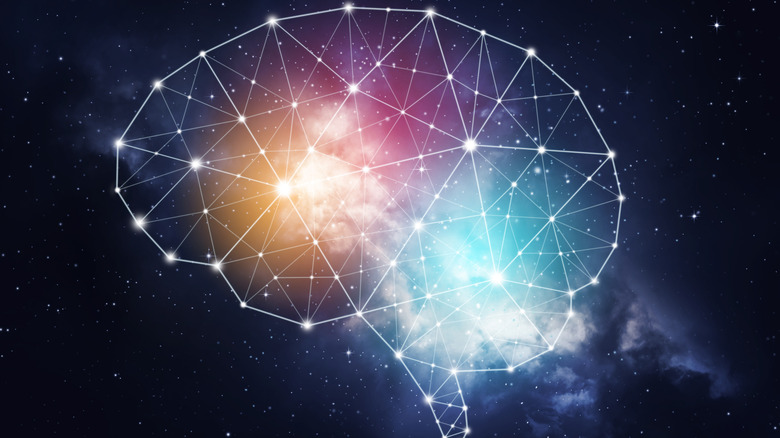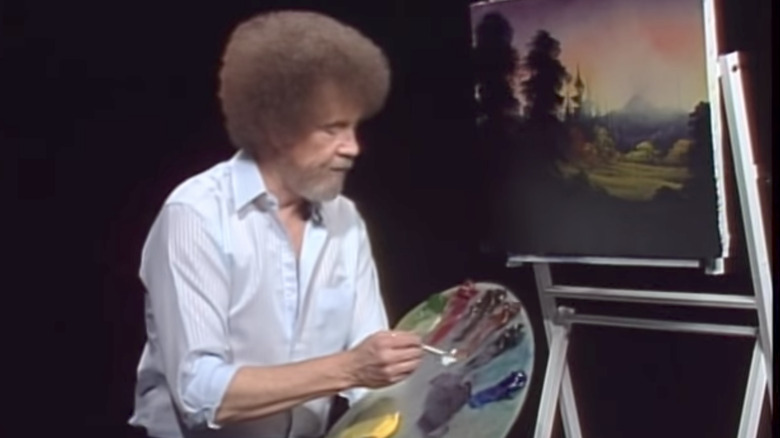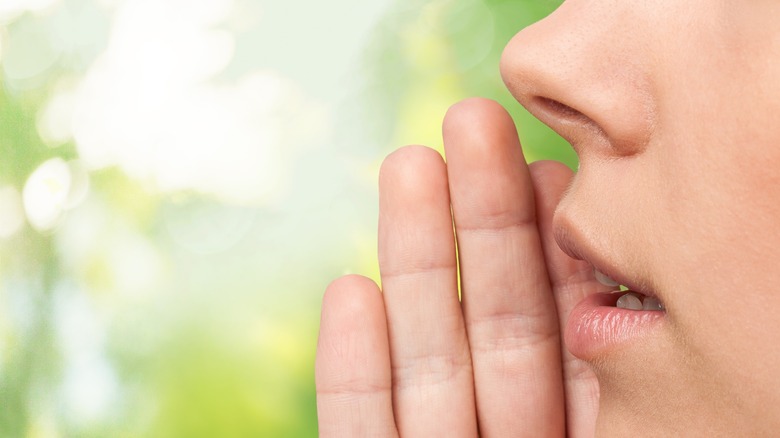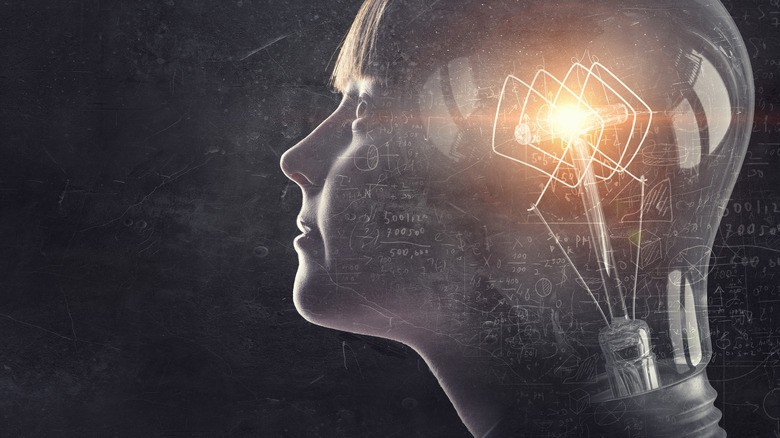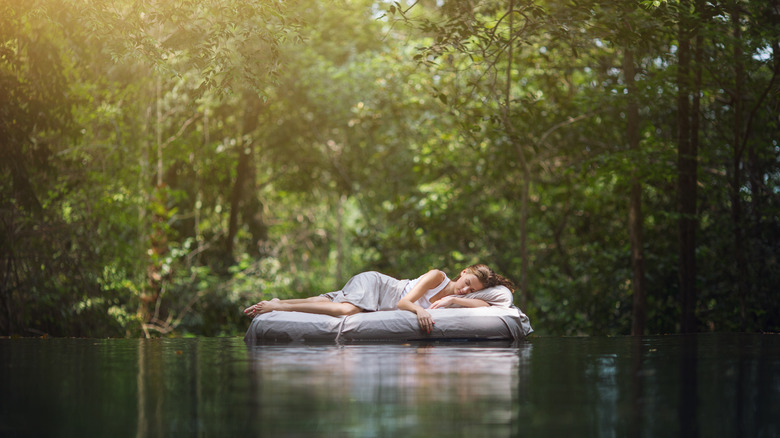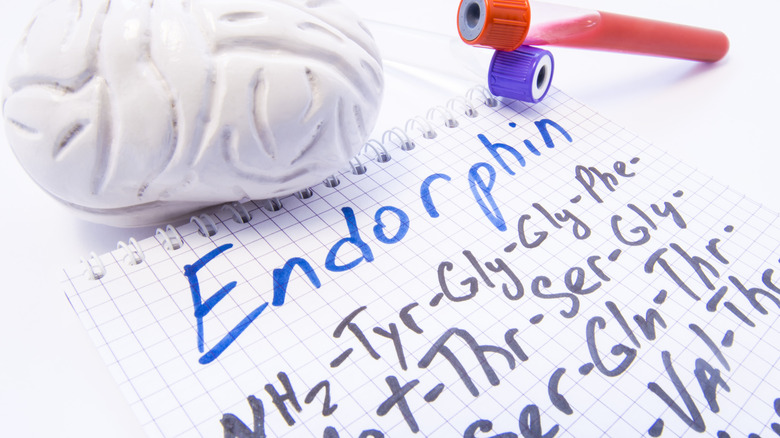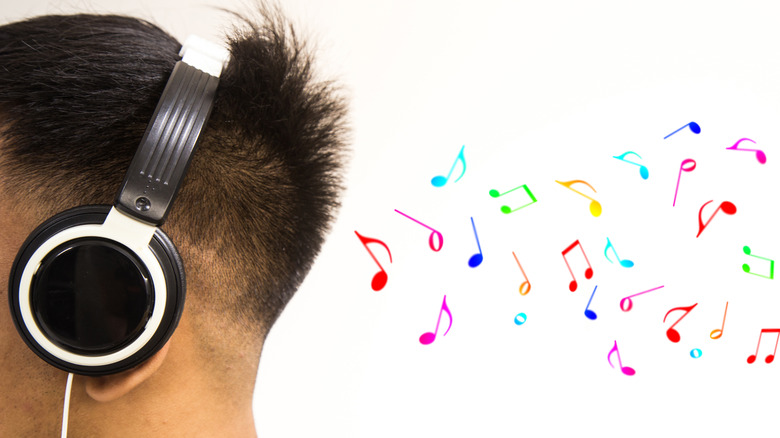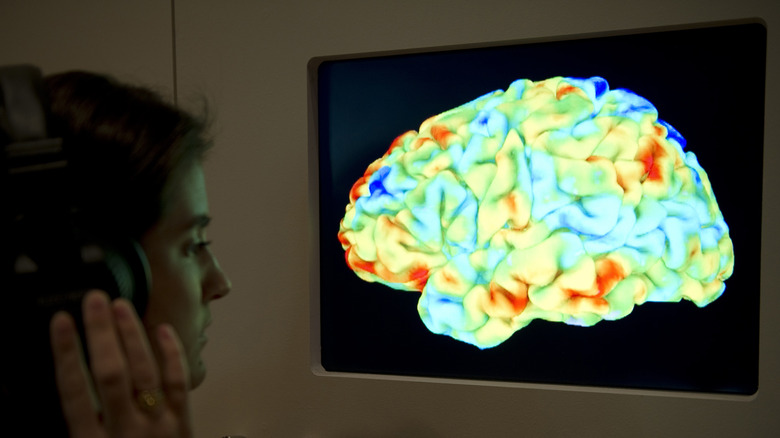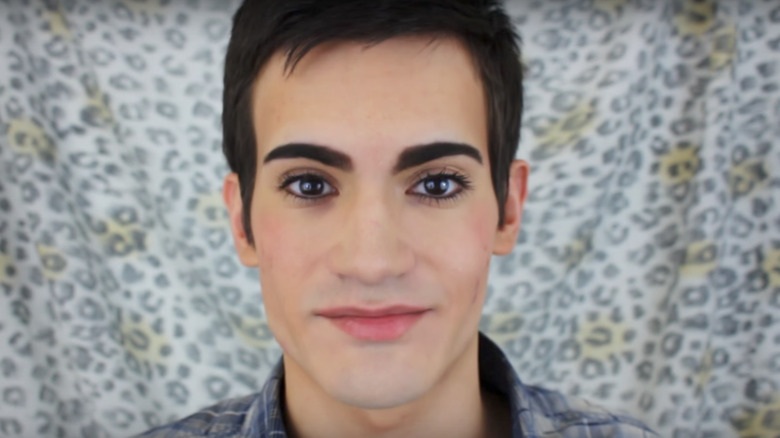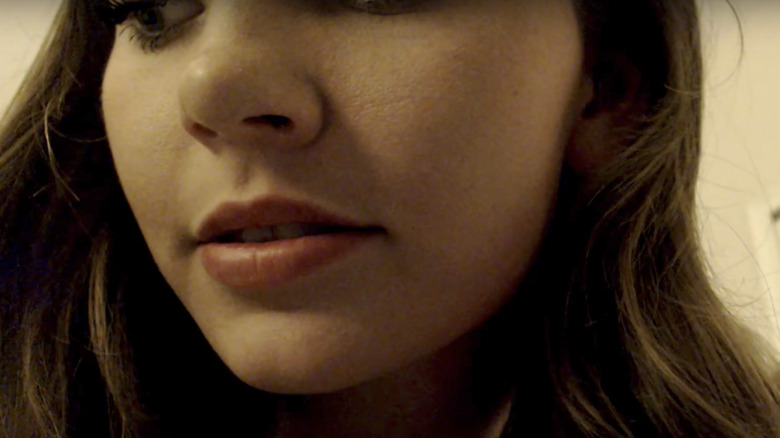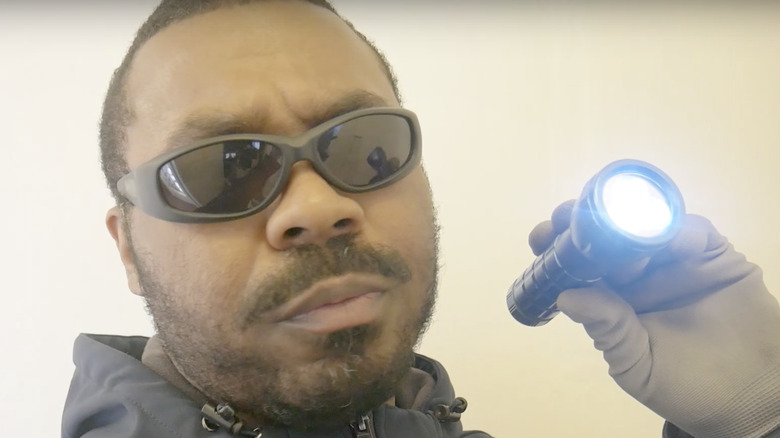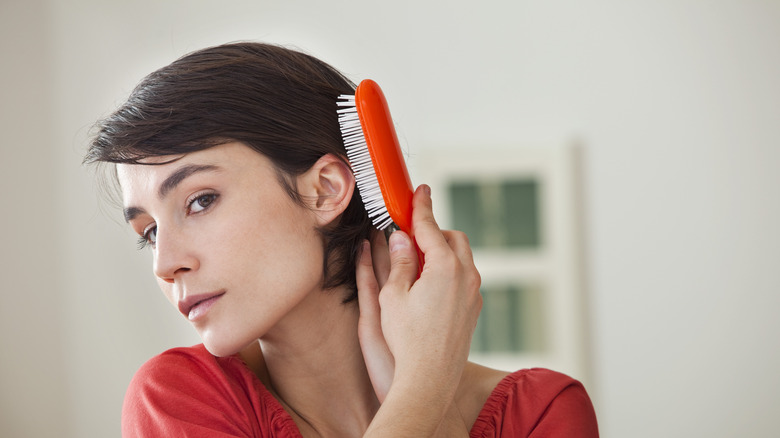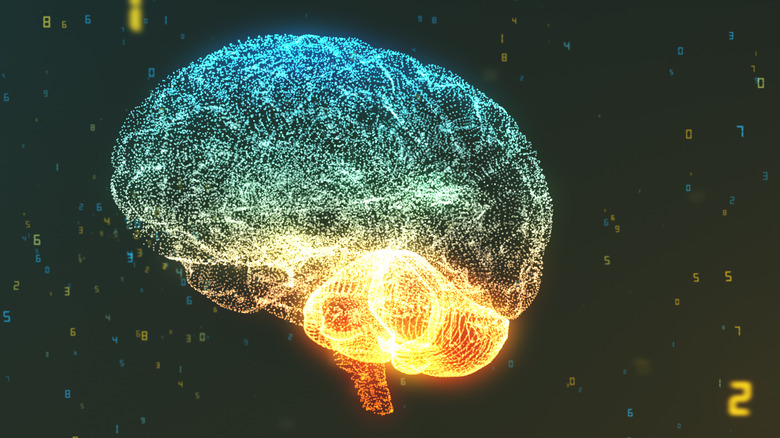The Untold Truth Of ASMR
What in the world is ASMR? The Guardian referred to it as "a feeling of otherworldly relaxation... like your brain is melting in a good way." Time says it is "a strange, tingly sensation... a brain orgasm." Intrigued?
Autonomous Sensory Meridian Response, or ASMR, is a unique phenomenon. Maybe chemical, maybe physiological, and maybe something else entirely, that causes a distinctive sensation of tingling, relaxation, and wellbeing. Scientists are just now studying its cause, but for now, it's a relatively unstudied, little-understood phenomenon that I myself happen to have experienced for decades. I only learned it had a name, however, in 2013 when I heard an NPR story describing the thing I never knew wasn't happening to everyone. From there, I found out about the burgeoning ASMR scene on YouTube, where self-titled 'ASMRtists' make videos intended to trigger ASMR, garnering hundreds of thousands, and in some cases, millions of views.
ASMR is a term thought to be coined in 2010 by Jenn Allen, a healthcare IT worker who founded an 'ASMR' Facebook group. Talk of this curious phenomena has since moved from the weird corners of the internet, to scientific communities, to the mainstream in recent years. So in addition to reading through the popular media, scientific journals, and even searching the trenches of the weirdest YouTube videos, I also interviewed professional (and experimental) ASMR trigger artist Tony Bomboni about his process. And here's the result ― my response to the question: what the heck is up with ASMR?
In ASMR, being "triggered" is a good thing
Maybe you were a little kid and getting your hair washed sent a delightful wave of tingles through your scalp. Maybe you've always felt a strange kind of relaxation watching and listening to the legendary "happy trees" painter, Bob Ross, dust his brushes pleasantly across the canvas and talk in those famous low, dulcet, non-threatening tones. Maybe a doctor with a soft, gentle manner was examining your ears when you felt a wash of pleasant vibration move over your scalp. Maybe sometimes your yoga teacher just has the most pleasing voice ever when they're talking softly through a meditation and you start to feel a calm and blissful static that may start in your head and move down your spine. If you immediately identify with one of these descriptions, you may have the ability to experience ASMR.
But the ASMR feeling doesn't seem to just pop up out of nowhere. As described in one of the only peer-reviewed scientific papers on ASMR to date, "Autonomous Sensory Meridian Response (ASMR): a flow-like mental state," published in PeerJ, it has to be triggered. And while in the fields of mental health, being triggered generally means some reminder of a past trauma sending the sufferer into a bad, or reactive state of mind, quite the opposite is true in the ASMR world, seeing as "...specific triggering audio and visual stimuli," causes "feelings of relaxation and well-being."
Triggers can be auditory, visual, or physical
Dr. Craig Richard, a professor of biopharmaceutical sciences, PhD in physiology and cell biology, and founder of ASMR University (formerly known as the ASMR Research Institute), divides the usual triggers for the ASM response into three categories (although he admits there may be more undocumented). "Tactile stimuli" is a major trigger, but strangely, the subject doesn't necessarily need to be touched themselves. Just witnessing or thinking about the touch, as Mark O'Connell for Slate discusses, can sometimes produce ASMR. Examples can include watching or experiencing "light touch, massage, hair touching, grooming, and physical examination."
Visual stimulation includes "eye gazing and observing slow [often methodical] hand movements." And the third category, "auditory stimuli," perhaps the one I've seen focused on most in my experience with the ASMR online community, specific "vocal types (e.g. soft, whispering, slow, gentle, increased pitch, caring, monotone), oral sounds (eg mouth sounds, chewing, blowing), and object-related sounds (e.g. tapping, scratching, cutting, crinkling, caressing, handling)," according to Dr. Richard's designations.
I asked ASMRtist, Tony Bomboni (who himself experiences ASMR in addition to triggering it in others professionally), about his favorite triggers. He responded that, while they do change, "As of late, [his] favorite triggers have to be water sounds, whispering up close, typing sounds, white noise, and rumbling through packaging or plastic."
There are lots of common triggers... and lots of bizarre ones too
I, like most people with ASMR, remember being very young while first experiencing the feeling. An older kid was carefully explaining some concept of astronomy to me. Maybe it was their calm, soft voice, maybe it was the care and personal attention I felt I was receiving, but either way, I found myself beginning to feel a buzzing sensation behind my eyes and around my scalp that made me feel like everything was right with the world momentarily.
The ASMR study published in PeerJ found that the most common self-reported ASMR triggers from study participants were "...whispering (75%), personal attention (69%), crisp sounds (64%) and slow movements (53%). 34% of participants also reported that their ASMR was triggered by watching repetitive tasks." All these common triggers might arguably have a root association with habits of interpersonal bonding, argues Dr. Richard. He talks about "...specific behaviors which stimulate the release of endorphins, dopamine, oxytocin, and serotonin. These bonding behaviors and molecules may provide a good explanation for most of the triggers and responses associated with ASMR." Makes sense for common triggers like close-in whispering, or clinical examination role play, right? That's why some less-common yet still reported triggers sound bizarre and sometimes a little funny. I've run across reported triggers as varied as "chubby fingers touching something small," to a video of someone deflating a blow-up globe, which had about half a million views a year after being uploaded.
ASMR could help cure your depression, anxiety, or insomnia
One of the stated goals of the study published in PeerJ was to explore the "...suggestion that ASMR may be of use for providing temporary relief to individuals with depression, stress and chronic pain." Self-reported results recorded a measureable improvement in mood-related symptoms, with the biggest margin of relief found in the most serious sufferers, but no really convincing difference when it came to chronic pain.
In the meantime, people all over internet communities like YouTube and Reddit where ASMR is discussed, anecdotally share their experiences of improvement in mental and physical health following feeling those telltale tingles. I personally know that, at least temporarily, I experience reduced stress and a more relaxed mood after having ASMR.
Perhaps most notably, popular ASMR YouTubers claim that their videos will help you sleep, and so far, anecdotal evidence seems to back them up. From glowing YouTube fan comments, to self-reported improvement in sleep in the PeerJ study, to my own personal experience, ASMR certainly seems to dull the effects of insomnia. In our interview, Tony Bomboni even said he avoids ASMR if he has things to do because he will too easily "drift off." More study is needed to back up these suppositions, but ASMR as a potential therapy for a variety of conditions is definitely a field primed for future research.
Not everybody experiences ASMR
We don't know what percentage of the population experiences ASMR. But one thing we know from self-reporting and anecdotal evidence is that some people immediately identify with the working description of ASMR, and some people just don't, even when faced with common ASMR triggers. Could it mean they just haven't found their particular triggers yet? That's possible. But it's likely that some people's physiology just aren't hardwired for it.
In his origin theories on ASMR, Dr. Richard writes that he suspects some people simply have different thresholds for their biological responses to stimuli. "Everyone (except for some very rare exceptions) produces endorphins, dopamine, oxytocin, and serotonin," says the leader of ASMR University's studies, "but the ability to feel those molecules in response to a "strange" stimulus may differ between individuals."
So the tingling feelings of "euphoria and comfort" that describe a general ASMR response may be felt in response to ASMR-related stimuli in some individuals, but only in response to other forms of stimuli for others. For example, some people may need to actually be touched or comforted by a loved one to achieve the same effect that others experience from ASMR videos. "individuals that create high amounts of endorphins easily and/or have endorphin receptors that are very sensitive may be more likely to feel the euphoria from a small trigger... this same concept of molecule production and receptor sensitivities applies to all the other molecules involved in bonding and ASMR," Dr. Richard explains, though this is just his best working theory.
People who get ASMR are more likely to experience other neurological phenomena
Many people compare the elusive and difficult to describe phenomenon of ASMR to the likes of synesthesia, or misophonia (written about here in The Washington Post). Both of these hard-to-measure, sensational conditions were once unrecognized by the scientific community, and are now acknowledged after research; although they still aren't fully understood. Could ASMR, synesthesia, and/or misophonia work through similar biological, neurological and/or chemical functions? Maybe. If you experience one, you're likely slightly more likely to experience another than the rest of the crowd. Notably, the results of the PeerJ study, which discussed the similarities of these three phenomena at the outset, found that a measurably higher percentage than the general population of people who experience ASMR also experience synesthesia, suggesting a link requiring further investigation.
There's some research, but not much hard scientific data on ASMR... yet
Acknowledging and talking about the concept of ASMR is so recent that in 2013, the only organized study and findings on the topic were the stuff of a Dartmouth undergrad, Bryson Lochte's, senior thesis. It's not available online, but is on file at the Dartmouth library, and the author talks about it in the ASMR Reddit group. As he told ASMR University's Dr. Richard in a 2015 interview, his work is still in progress, and results can't be released yet, but it involved viewing study participants' brain activity through functional MRI technology (fMRI) while they viewed ASMR-triggering videos.
Above, I've already referred to results from the first study about ASMR that included original data and was published in a peer-reviewed journal (a standard of the science field). In this seminal study, authors collected data from 475 volunteers via an online questionnaire, "in order to gather information on the prevalence of particular features of ASMR, when and why individuals engage in ASMR, and the relation of ASMR to other known phenomenon."
Among the other few notable publications, a study published in a 2016 issue of Social Neuroscience, which seems to owe some methodology to Lochte's thesis work, used fMRI machines to measure varied brain activity between people experiencing ASMR compared to those who weren't. What exactly does that mean? The jury is still out.
Tons of people make their entire living making ASMR videos
Tony Bomboni, of the weird and wild Tony Bomboni ASMR channel, replied with a "yes" to my question whether or not ASMR is his full-time career. In addition to his main ASMR channel, he also puts energy into a "...vlog channel, Patreon, YouNow live steaming..." you get the idea.
And he's not exactly casual about his work either. "As far as equipment, I use five different microphones to make my work happen. Not all at the same time, but in different variables," he told me in our interview. "I have two different cameras, two laptops, multiple mic stands, two sets of lighting equipment..." he went on, describing his process of recording binaural ASMR, which is a way of giving listeners with headphones a sort of 3D sound experience.
Bomboni is far from being the only one who makes a living creating tingly content for his YouTube channel. Some mega-popular ASMR YouTubers, like Maria of Gentle Whispering ASMR, command over a million subscribers — a situation that can be quite lucrative. If you're interested, here's Maria's short introduction to ASMR, which she indicates was originally requested by The Washington Post.
It's not sexual...or is it?
So you watch videos on the internet about people pretending to whisper in your ear, massage your scalp, or give you intense, personal attention, and you're telling me it's not sexual? A few people have asked me that, and at least for me, the answer is a firm mark in the non-sexual column. And many other people who experience ASMR seem to agree.
Andrea Seigel, from that first public radio segment I heard about ASMR discusses her own understanding of ASMR as being non-sexual, even though searching for videos with the "right trigger" does kind of sound like a pornographic experience. And as one of my favorite ASMRtists, ASMR Darling, says in her "about ASMR" video, "...please do not think that ASMR is sexual at all. ASMR itself is not sexual. It is biologically not sexual." That doesn't mean that some ASMR content creators don't set out to create pornographic content, as a sort of secondary ASMR genre. "There are ASMR artists out there that make their content purposely sexual," she admits, "...but my material [is] kid-safe and appropriate, and never sexual."
Similarly, Bomboni told me that he has "given up trying to explain that it is not meant to be sexual," and that he does "think it is common now for ASMR to be sexualized," even if that's not the overarching intention.
ASMRtists get a lot of oddly specific requests
Many ASMRtists self-report that they get lots of the ideas for their content based on user requests. Although I know this anecdotally, like from reading YouTube comments (groan) and video descriptions, it makes sense that people might request ASMRtists to recreate experiences that have triggered them IRL. As a result, the web is flush with videos roleplaying doctors giving cranial nerve exams, makeup tutorials, neck massages, intimate talks with friends, hair brushing, and optometrist appointments.
There are more than are a few example ASMR video titles with such specific trigger circumstances that even I had to LOL, such as: "ASMR School Nurse: First Day of School," "ASMR Traffic Stop," "Store Clerk Examining what you Stole (ASMR Roleplay)" and "Sad Wedding Planner Roleplay (ASMR)." The last two are Bomboni videos that are related to what he described to me as requests for "fantasy roleplays or strange awkward and uncomfortable scenarios, to make the viewer cringe. Like... examining what you stole from the store roleplay... something along those lines."
There's an "ASMR spa" in NYC
In summer of 2017, BuzzFeed released a video of a few of its staffers attending an "ASMR Spa" in New York City, which lead me to explore more, since videos showing spa treatments are one of my personal fave ASMR triggers. It turns out that Whisperlodge, a real live ASMR day spa, doesn't necessarily feature traditional spa treatments, but rather access to "trained guides work one-on-one with each guest in a series of visual, auditory, and haptic treatments designed to relax the body and mind." With more locations set to open in California, it seems that in-person ASMR sessions might soon become an accessible option for ASMR enthusiasts.
How to tell if you get ASMR
Have you experienced ASMR? Do you "get it" frequently, intentionally or unintentionally? Are you not sure? Do you think we're all crazy? Do you want to know the best way to check if you are one of these weird and wonderful people who can dissolve into euphoric tingles by watching old The Joy of Painting videos on YouTube? Well, there is no official recommendation as to exactly how to check, but many people, as I did, seem to just hear about the phenomenon somehow and immediately think, "Hey, I get that!"
That said, if you want a more methodical way of determining your status as an ASMR wizard of a muggle, there is a sub-genre of ASMR videos popping up on YouTube that is just a series of common triggers or "tests" to check your ability to experience the enigmatic phenomenon. So grab a pair of headphones, go to YouTube, and search "ASMR test." You'll find what you're looking for.
So you think you get ASMR. Now what?
After scrolling through this entire article, and maybe watching some of the tingle-inducing ASMR videos, you're probably thinking one of a few things. Maybe you're shaking your head at this 'weirdo fringe group.' Maybe your brain is exploding because you totally have this 'ASMR' thing, and didn't know what it was or what to call it! Or maybe you read through to the end because you're already obsessed with ASMR and would love to learn about it. If your reaction is one of the latter two, then get yourself over to the ASMR Research Project website, and take the online survey for the lucky among us who experience ASMR. Your answers could help scientists understand this weird and wonderful phenomenon, and how it might be used around the world as a beneficial new therapeutic practice.

